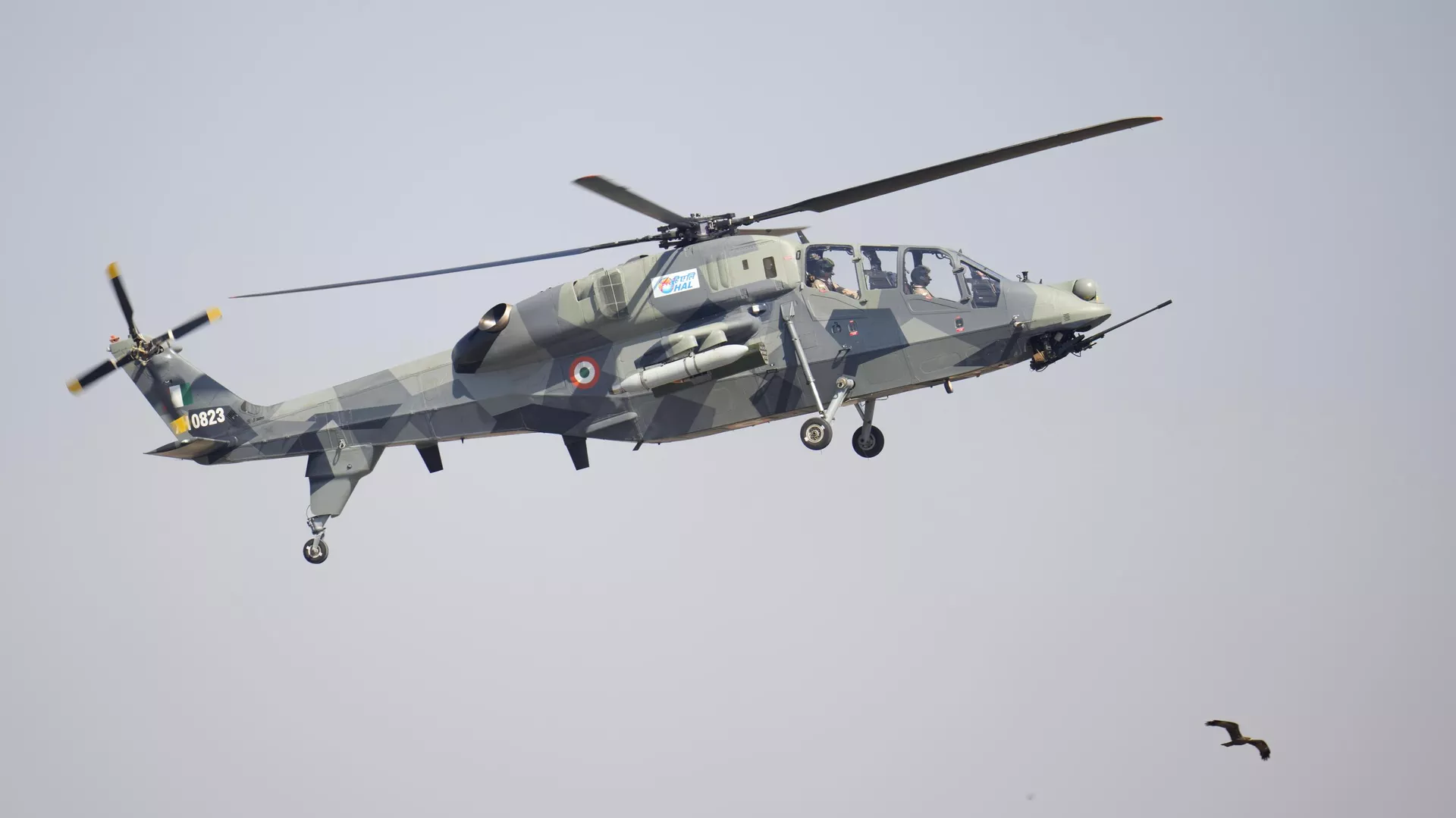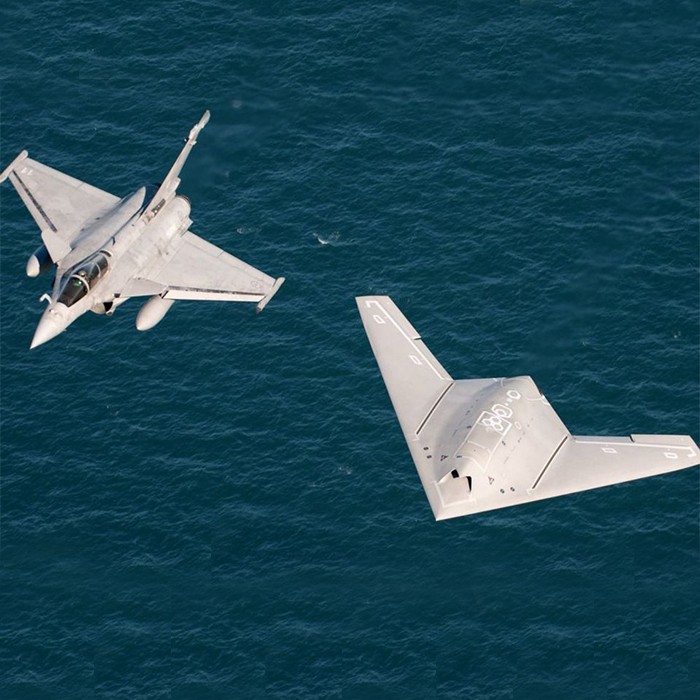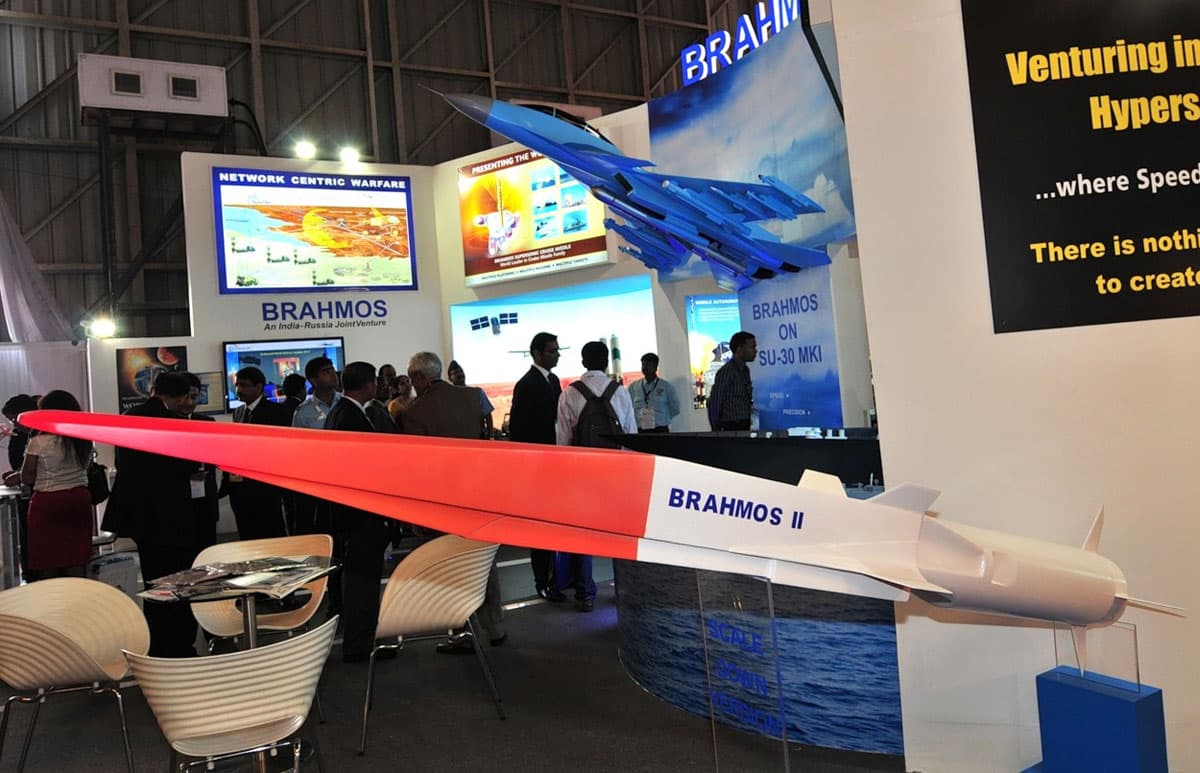Monthly Archives: June 2023
SOURCE: RAUNAK KUNDE / NEWS BEAT / IDRW.ORG


India has issued Revised Notices to Airmen (NOTAM) for a launch of a missile in the Bay of Bengal for the period from 21-22 June 2023 t as per information provided by Twitter user Damien Symon@detresfa_.
The designated area for the NOTAM is 750km in length which indicates it might be a test of the Agni-I from Abdul Kalam Island.
Continue readingSOURCE: RAUNAK KUNDE / NEWS BEAT / IDRW.ORG


The Indian Space Research Organisation (ISRO) has reached a significant milestone in its ambitious Next Generation Launch Vehicle (NGLV) project. According to ISRO Chairman S. Somnath, the architecture for the NGLV has been finalized, marking a crucial step forward in India’s space exploration endeavors.
The NGLV project has been eagerly anticipated, and the preliminary report detailing the rocket’s design and technological requirements has been submitted by the dedicated team. The report outlines various aspects such as the rocket’s appearance, recommended technological advancements, manufacturing techniques, and suitable locations for production.
Continue readingSOURCE: RAUNAK KUNDE / NEWS BEAT / IDRW.ORG

Tata Advanced Systems is expected to play a significant role as a supply chain partner for GE Aerospace and Hindustan Aeronautics Limited (HAL) in the manufacturing of components for the F-414 engine.
The Engine Division of HAL is likely to produce the F-414 engine in India, and GE is eager to establish a robust network of medium and small business suppliers (MSMEs) in the country for the engine program. Tata Advanced Systems is poised to become a Tier-I partner for the engine program, working closely with GE and HAL.
Continue readingSOURCE: RAUNAK KUNDE / NEWS BEAT / IDRW.ORG


HAL (Hindustan Aeronautics Limited) officials, in collaboration with Indian Ambassador to Argentina, Dinesh Bhatia, recently held a meeting with Argentina Air Force officials to discuss potential export opportunities. The focus of the discussion was two Indian helicopters that had captured the attention of the Argentine air force officials during the Defence expo and Aero India.
During the Defence expo, Brigadier General Xavier Issac, Chief of the Argentine Air Force, was given a detailed tour of the LCH Prachand, an advanced attack helicopter developed by HAL. The visit allowed the Argentine official to witness the capabilities and features of the helicopter firsthand. Subsequently, during Aero India, a team of pilots from Argentina had the privilege of exploring the LCH Prachand, providing them with valuable insights into its performance and potential applications.
Continue readingSOURCE: RAUNAK KUNDE / NEWS BEAT / IDRW.ORG

India and the United States are making progress towards a deal for the Transfer of Technology (ToT) of the F414 engine, which will be locally manufactured in India. This engine is intended for India’s Tejas MkII program and is also planned to be used on the upcoming TEDBF and AMCA fighter jets. Despite this, India remains committed to developing its indigenous Kaveri engine, which has been under development for the past three years.
The Kaveri engine is set to be reborn as the Dry Kaveri. Recent tests conducted at high-altitude facilities in Russia have demonstrated a thrust of 48 kN, although the production variant will be capped at 46 kN. The Dry Kaveri engine will power India’s upcoming Stealth Unmanned Combat Aerial Vehicle (UCAV) program, with plans to develop an improved variant for the Tejas Mk1 program as well.
Continue readingSOURCE: RAUNAK KUNDE / NEWS BEAT / IDRW.ORG


The Indian Navy has expressed a strong interest in procuring six additional Boeing P-8I Long Range Maritime Reconnaissance (LRMR) aircraft from the United States through a multi-billion-dollar Government-to-Government deal. This decision might be followed post renegotiations due to the expiration of the price offer last year, which later has to be cleared by India’s Defence Acquisition Council (DAC) led by the Defence Minister.
Initially, the Indian Ministry of Defence (MoD) had put the procurement of additional P-8I aircraft on hold to promote local alternative solutions. However, the Navy, seeking to enhance its maritime reconnaissance and anti-submarine warfare capabilities, is unwilling to wait for a local solution that could potentially take a decade or more to materialize. This urgency is driven by growing Chinese Naval assertions in the Indian Ocean Region (IOR).
Continue readingSOURCE: RAUNAK KUNDE / NEWS BEAT / IDRW.ORG


Dassault, the French aerospace company, has initiated the development of F5 Standard upgrades for its Rafale fighter jet. These upgrades will incorporate the latest systems, enabling the Rafale to effectively interact with Unmanned Aerial Vehicles (UAVs) such as Loyalwingman and Unmanned Stealth UCAVs. The integration of these capabilities is set to begin in 2030 and will provide backward compatibility, allowing current users of the Rafale, including India with its fleet of 36 Rafale 3FR jets, to seamlessly control and execute combat operations alongside various UAVs.
Dassault Aviation is actively working on these upgrades to enable the Rafale F5 to collaborate with the European Future Combat Aircraft System (FCAS) and other Loyal wingman programs being developed in Europe. However, it is currently unclear whether these upgrades will also facilitate interactions between the Indian variant of the Rafale and domestically produced Indian Loyal wingman and UCAVs.
Continue readingSOURCE: RAUNAK KUNDE / NEWS BEAT / IDRW.ORG


German Defence Minister Boris Pistorius has presented a comprehensive roadmap for the next-generation submarine being offered to India, emphasizing plans to customize the submarine to meet specific Indian requirements. Germany has proposed a government-to-government contract for the submarines, and while it may still be asked to participate in the tender for Project-75I, the current offer places Germany in a favorable position against South Korea, which is also vying to supply its submarines.
Under the proposal, state-run Mazagon Dock Shipbuilders Limited (MDL) and private-sector dock Larsen & Toubro (L&T) will divide the orders, with MDL handling four submarines and L&T handling two. They will collaborate with German company ThyssenKrupp Marine Systems (TKMS) for local manufacturing of a variant of the U-214 submarine in India. The estimated cost for this project is over Rs 60,000 crore.
Continue readingSOURCE: RAUNAK KUNDE / NEWS BEAT / IDRW.ORG


BrahMos Aerospace has undertaken the task of developing multiple systems and subsystems that may be utilized in the future development of the Hypersonic BrahMos-2 cruise missile. The Hypersonic BrahMos-2 will draw inspiration from Russia’s 3M22 Tsirkon anti-ship hypersonic cruise missile, specifically incorporating elements of its scramjet engine technology.
In a recent revelation, it was disclosed that the accidental firing of a BrahMos combat missile into Pakistan last year resulted in a loss of Rs 24 crore to the Indian state exchequer. The Chief of BrahMos Aerospace has already confirmed that the cost of the Hypersonic BrahMos-2 will be double that of the standard BrahMos missile. This places it in a price range comparable to some of the domestically produced nuclear-capable Intermediate-Range Ballistic Missiles (IRBMs).
Continue readingSOURCE: RAUNAK KUNDE / NEWS BEAT / IDRW.ORG


India has sought assistance from Germany in maintaining the MTU’s MT 881 Eight-Cylinder Diesel Engine, which powers the South Korean K-9 Vajra, a 155 mm self-propelled howitzer. The Indian Army, which currently operates 100 K-9 Vajra howitzers, is eager to procure an additional 100 units with a Winterization kit to enhance operations in high-altitude regions. However, to operate effectively in such areas with low oxygen levels, upgrades to the fuel pump and air filter of the MTU engine are required.
In light of these requirements, the Indian Army intends to procure another 100 K-9 Vajra howitzers for deployment on its western front. To ensure a more direct and reliable supply chain for the MTU engine, India is seeking the establishment of a local supply chain within the country. This would reduce dependence on South Korea for engine-related support and spare parts. Instead, India aims to establish a direct supply chain with MTU in Germany.
Continue readingSOURCE: JOYDEEP GHOSH/ FOR MY TAKE / IDRW.ORG


The 255 km long Darbuk-Shyok-Daulat Beg Oldie road also called Sub-Sector North Road, is a strategic all-weather road in eastern Ladakh in India, close to the Line of Actual Control with China. It connectsLeh, capital city of Ladakh with the Daulat Beg Oldi (DBO) post next to Depsang Plains via the villages of Darbuk and Shyok along the Shyok River Valley. The work started slowly with 220-km long stretch between Shyok and DBO built between 2000 and 2019 by Border Roads Organisation.
The road was meant to reduce travel time between Leh and DBO from 2 days to just 6 hours. Indeed this road would have given Indian Army a strategic advantage whenever it wanted to defend the Depang Plains and DBO area, with the LAC being just 10 kms away. The road itself is about 5 – 6 kms further away from Depsang Plains, north of the Depsang Bulge, a 900 sq. kms area.
Continue readingSOURCE: RAUNAK KUNDE / NEWS BEAT / IDRW.ORG

Hindustan Aeronautics Limited (HAL), a state-run company in India, and American firm General Electric (GE) are in advanced discussions regarding the joint manufacturing of F-414 jet engines for fighter aircraft. The collaboration aims to explore opportunities for technological cooperation beyond the engines. Initially, the Engine Division of HAL in Bangalore will produce the F-414 engines with 60 per cent indigenous content, which will gradually increase over 10-15 years.
The F-414 engine, proposed by General Electric (GE), can generate 98kN of thrust and is currently the leading candidate for a contract to develop and locally produce the engine. The engine can be further developed into a high-thrust variant, generating 120-130kN of thrust, which would be suitable for India’s 5th generation fighter jets such as the Advanced Medium Combat Aircraft (AMCA) for the Indian Air Force (IAF) and the 5th generation variant of the Twin Engine Deck Based Fighter (TEDBF).
Continue readingSOURCE: RAUNAK KUNDE / NEWS BEAT / IDRW.ORG
:quality(70)/cloudfront-us-east-1.images.arcpublishing.com/archetype/S2GHGV54VBDB3KNLBZDV4LB3QQ.jpg)

India and the United States have initiated discussions to collaborate on the advancement of cutting-edge, next-generation technologies, including the development of Hypersonic Attack Cruise Missiles. These missiles would possess the capability to be air-launched from India’s P-8I Maritime Patrol Aircraft, enabling them to target heavily defended Carrier Battle Groups (CBGs) or flotillas of warships.
Both countries share a strong interest in the creation of long-range hypersonic cruise missiles capable of engaging heavily fortified, high-value targets such as enemy military bases and surface warships from extended distances.
Continue readingSOURCE: RAUNAK KUNDE / NEWS BEAT / IDRW.ORG


India has issued Revised Notices to Airmen (NOTAM) for a launch of a missile in the Bay of Bengal for the period from 07-08 June 2023 that was previously issued for the period of 18-19 May 2023 as per information provided by Twitter user Damien Symon@detresfa_.
The designated area for the NOTAM is 1680 km in length which indicates it might be a test of the Agni-P from Abdul Kalam Island. Agni P is a two-stage Canisterised solid propellant ballistic missile with dual redundant navigation and guidance system.
Continue readingSOURCE: RAUNAK KUNDE / NEWS BEAT / IDRW.ORG


Indian Navy and DRDO officials have engaged in discussions regarding the incorporation of long-range air defence interceptor missile systems into future frontline warships. This initiative aims to integrate extended-range interceptor missiles developed under the Extended Range Air Defense System (ERADS) program by DRDO.
The missiles being developed include the ERSAM (Extended Range Surface to Air Missile) and XRSAM (Extra Long Range Surface to Air Missile), designed to counter various targets, including enemy fighters, AWACS, and anti-ship missiles.
Continue reading